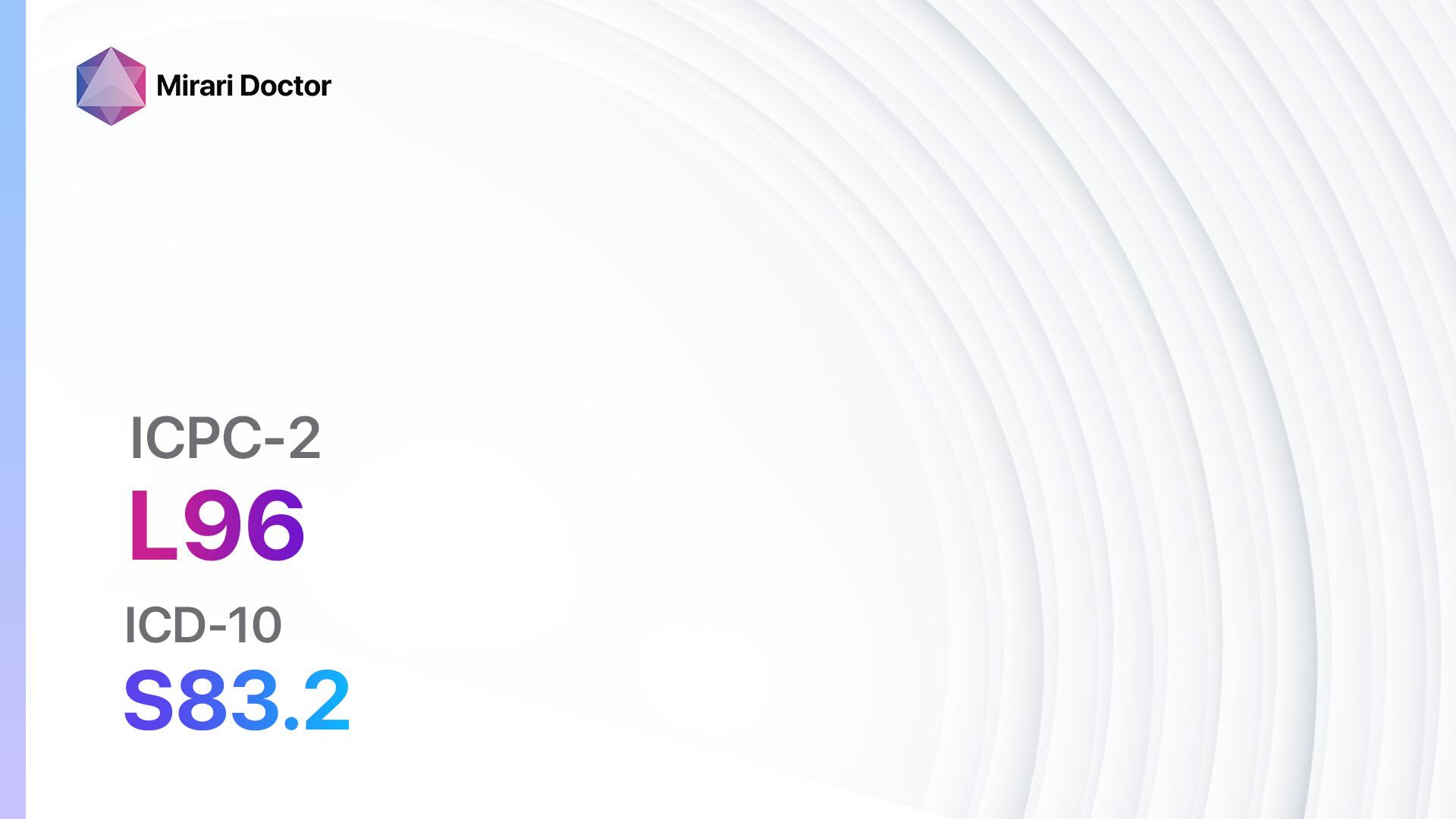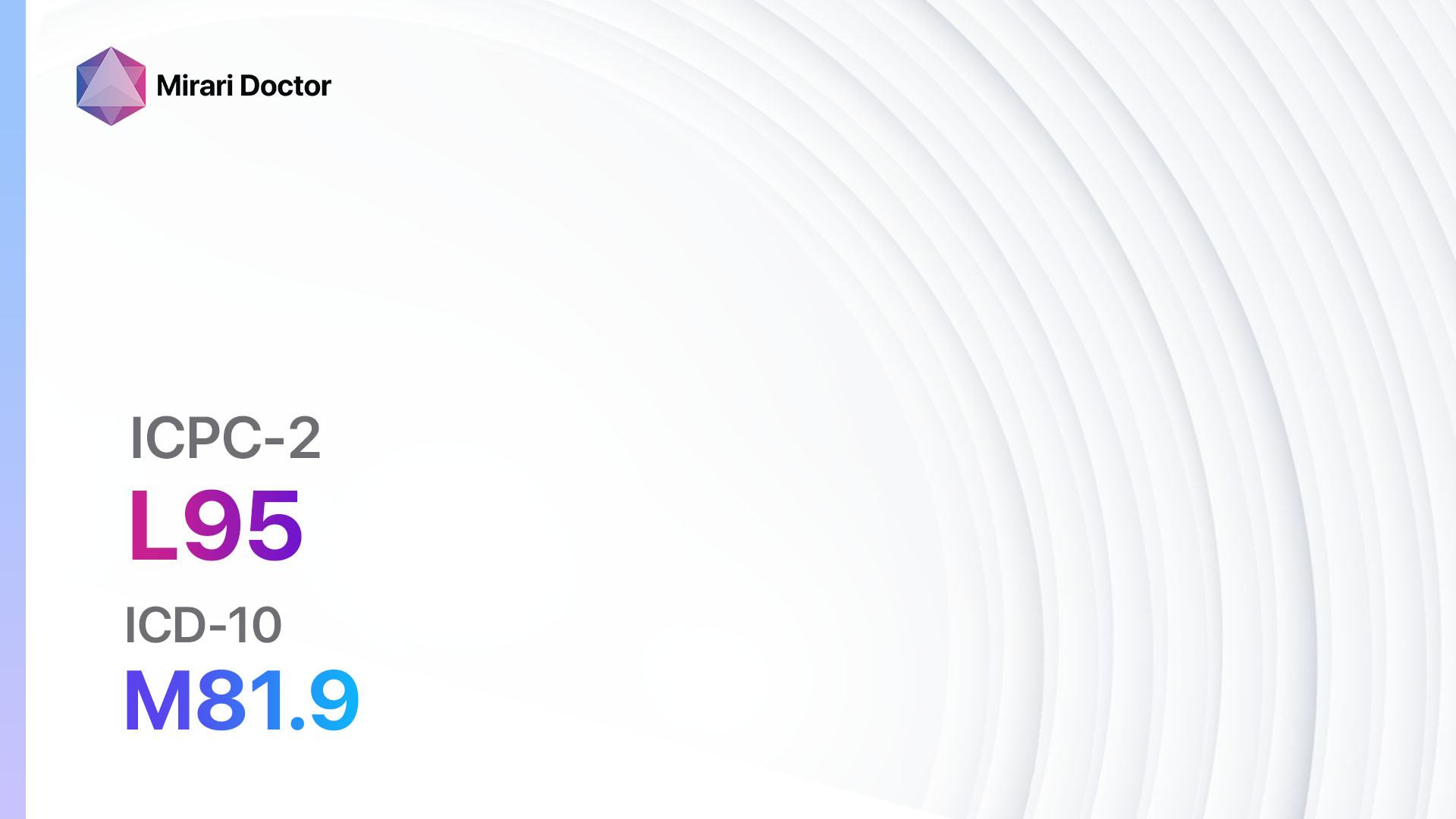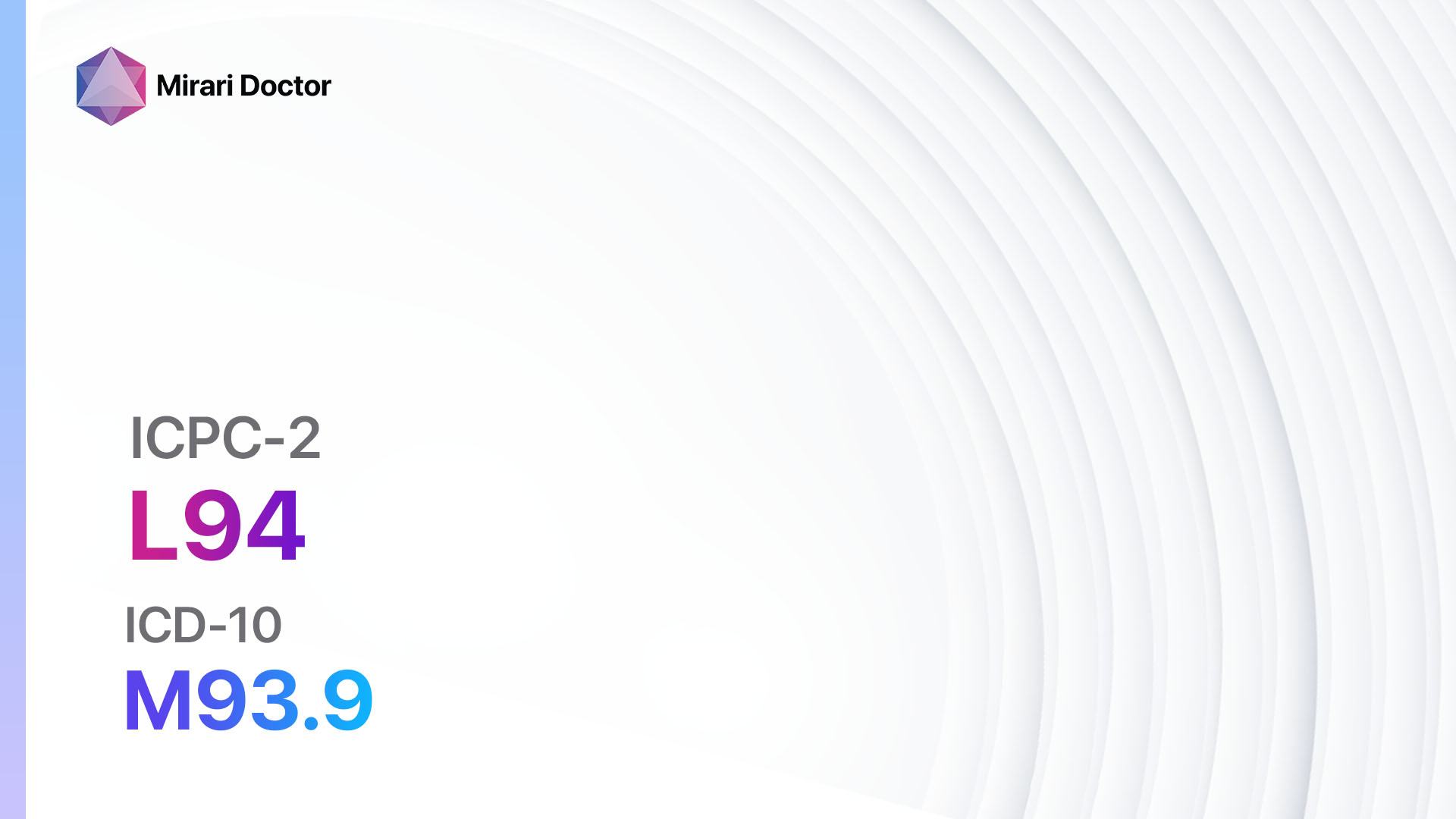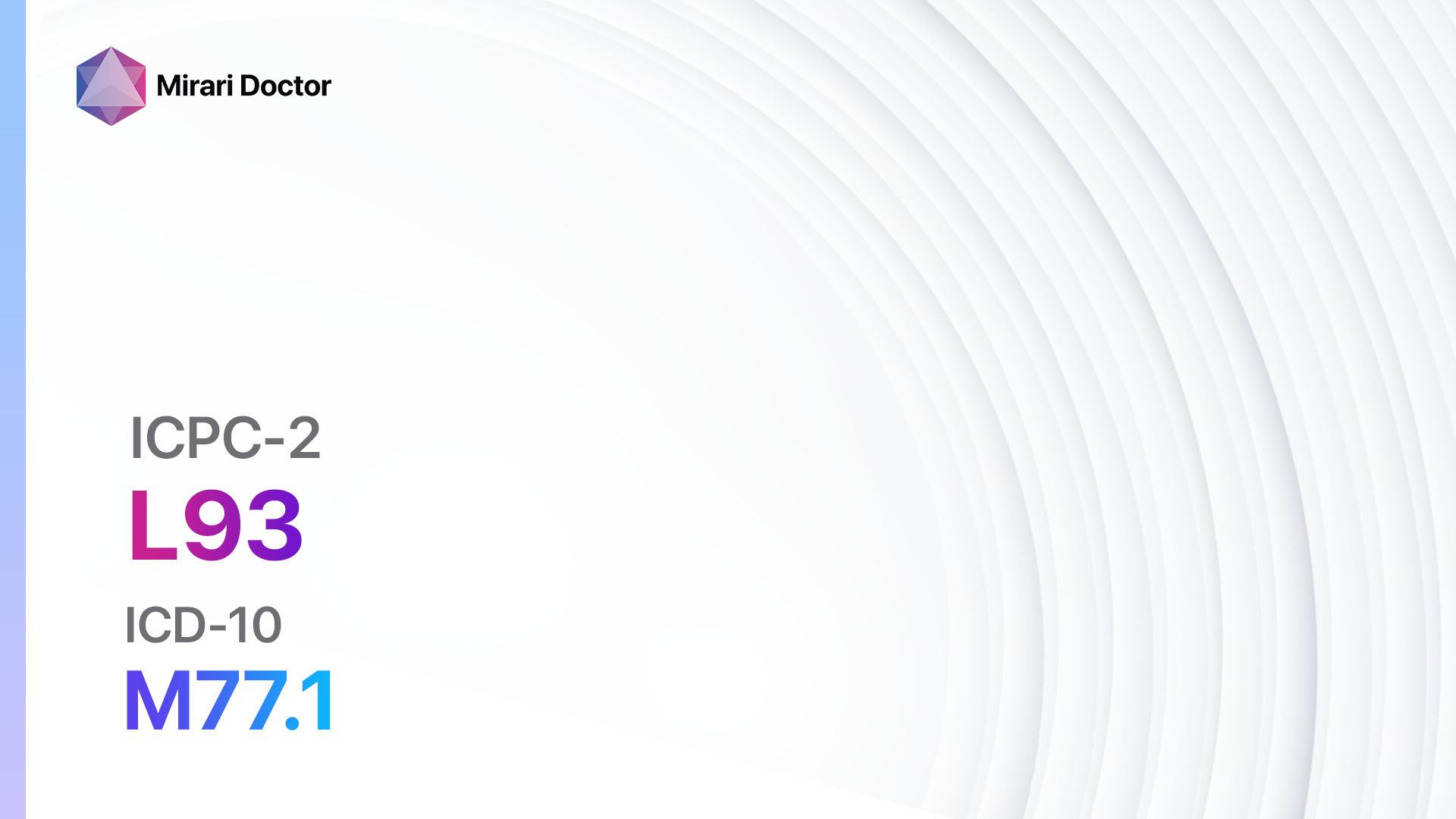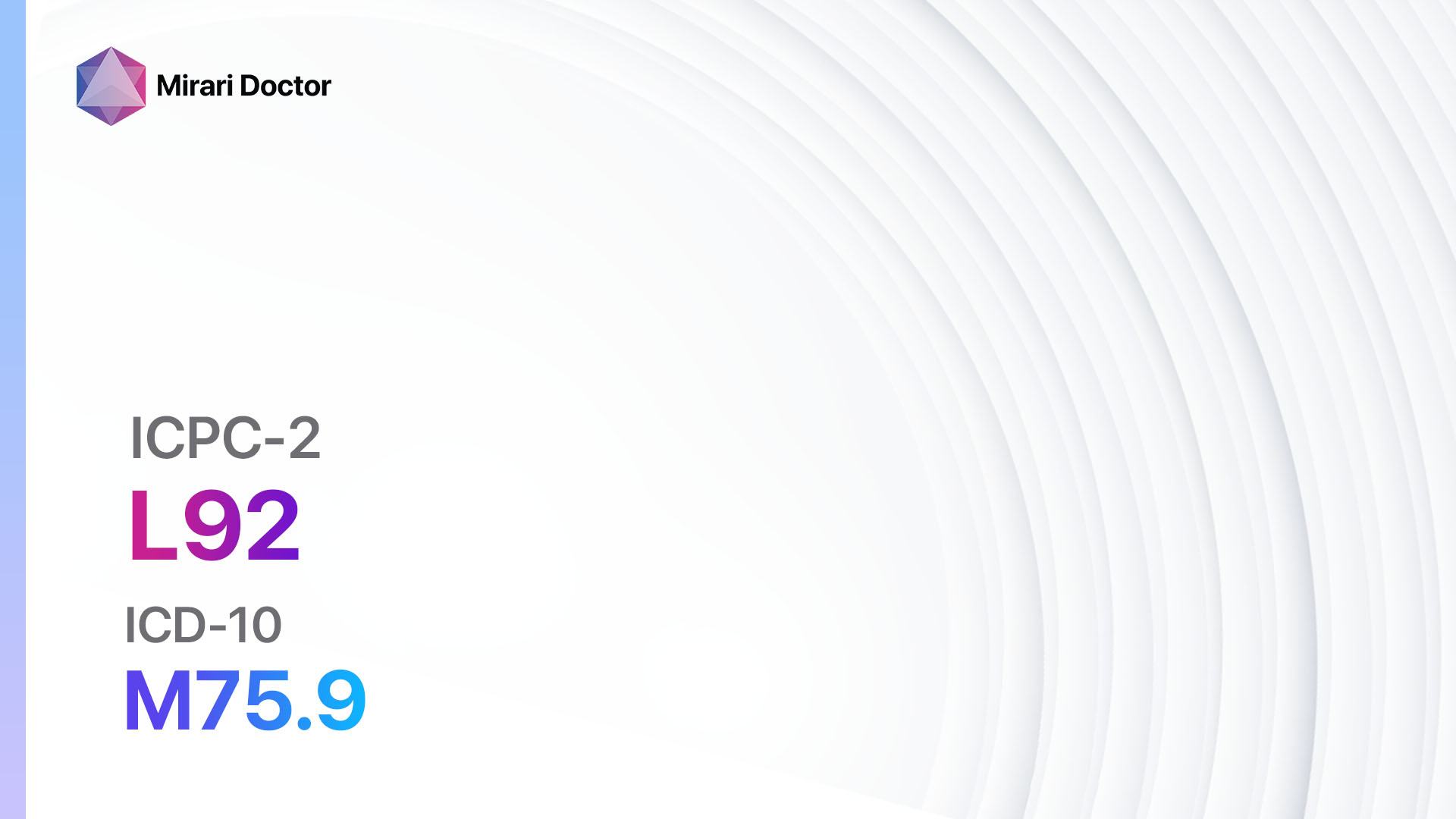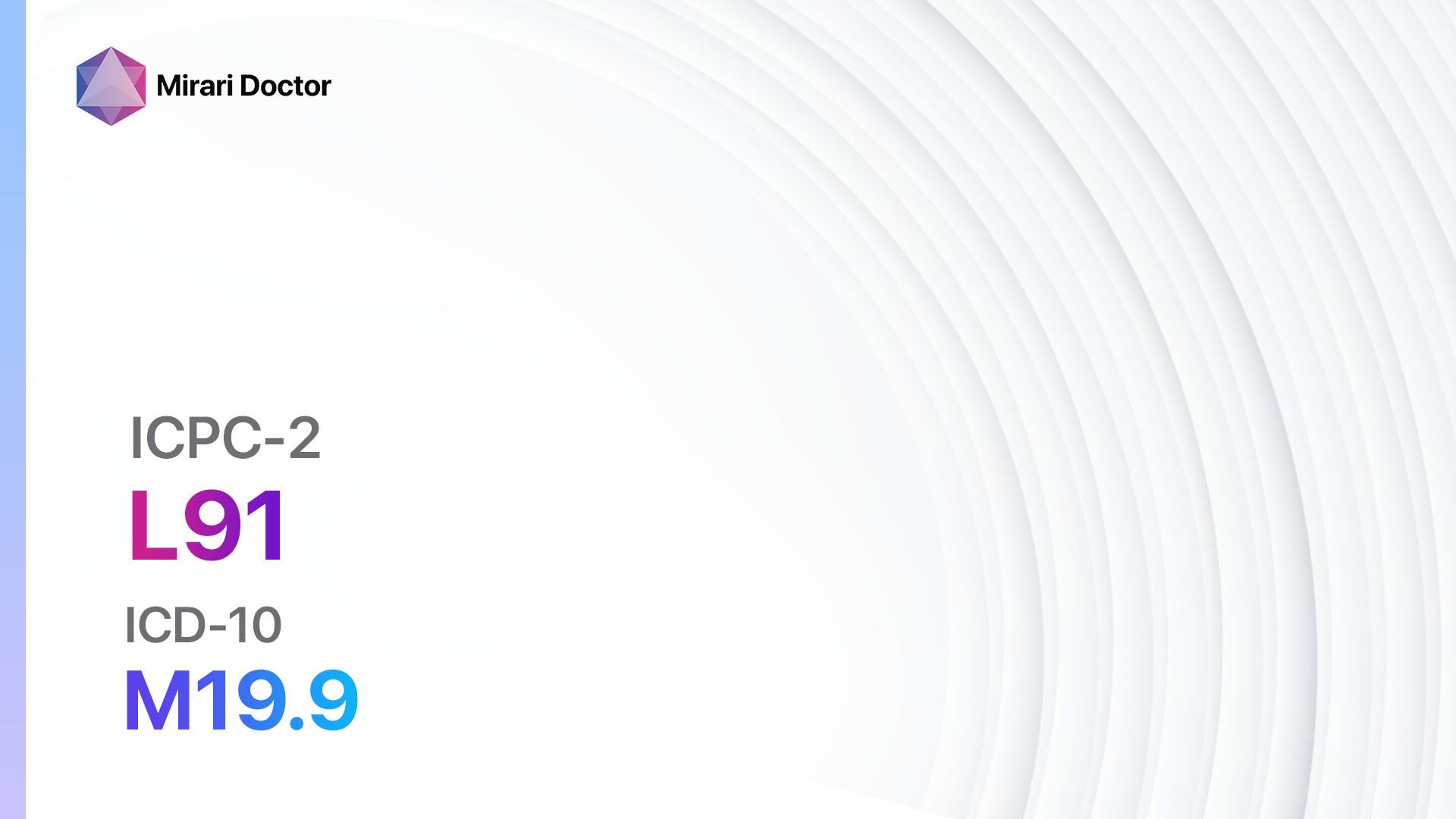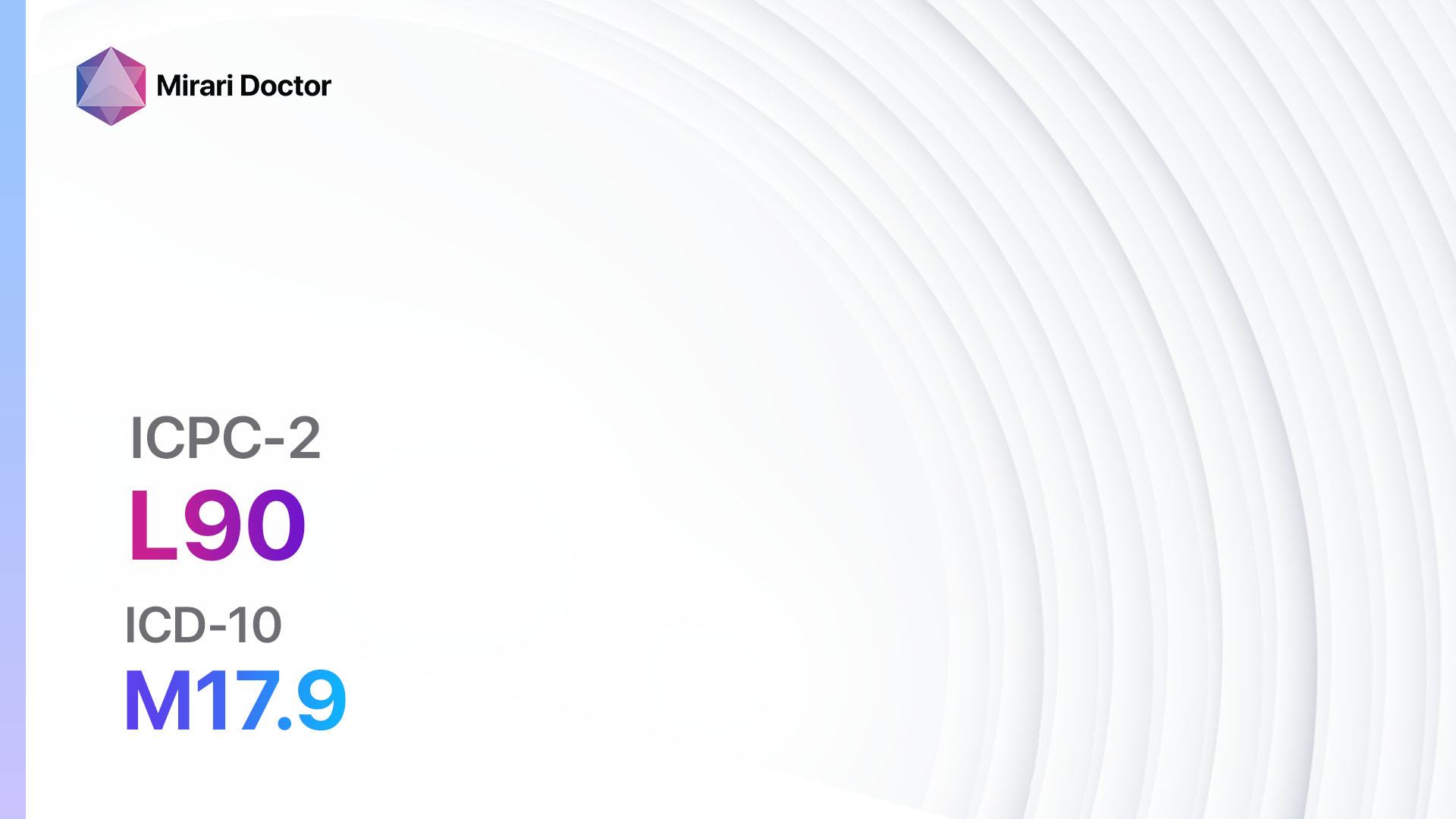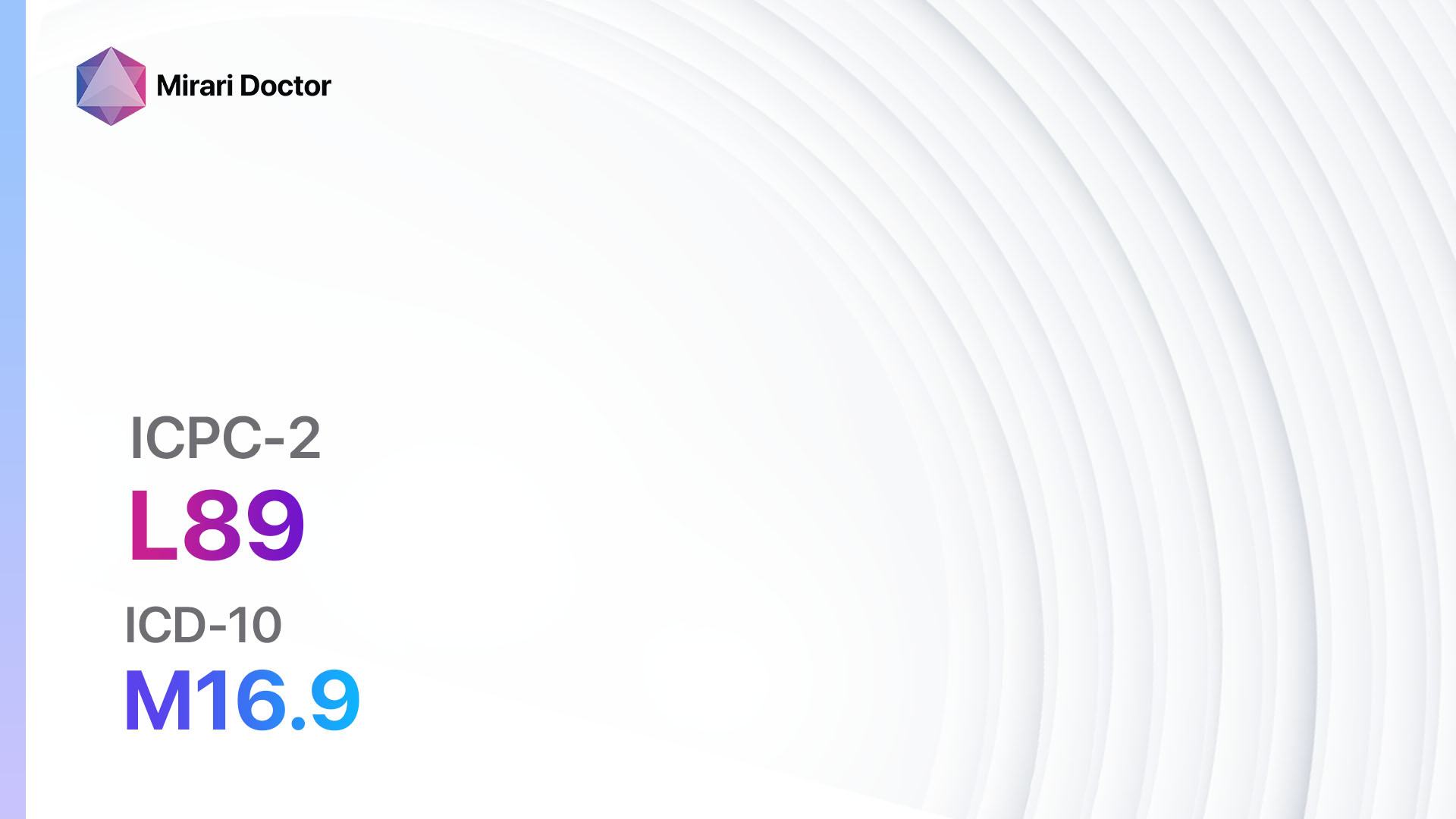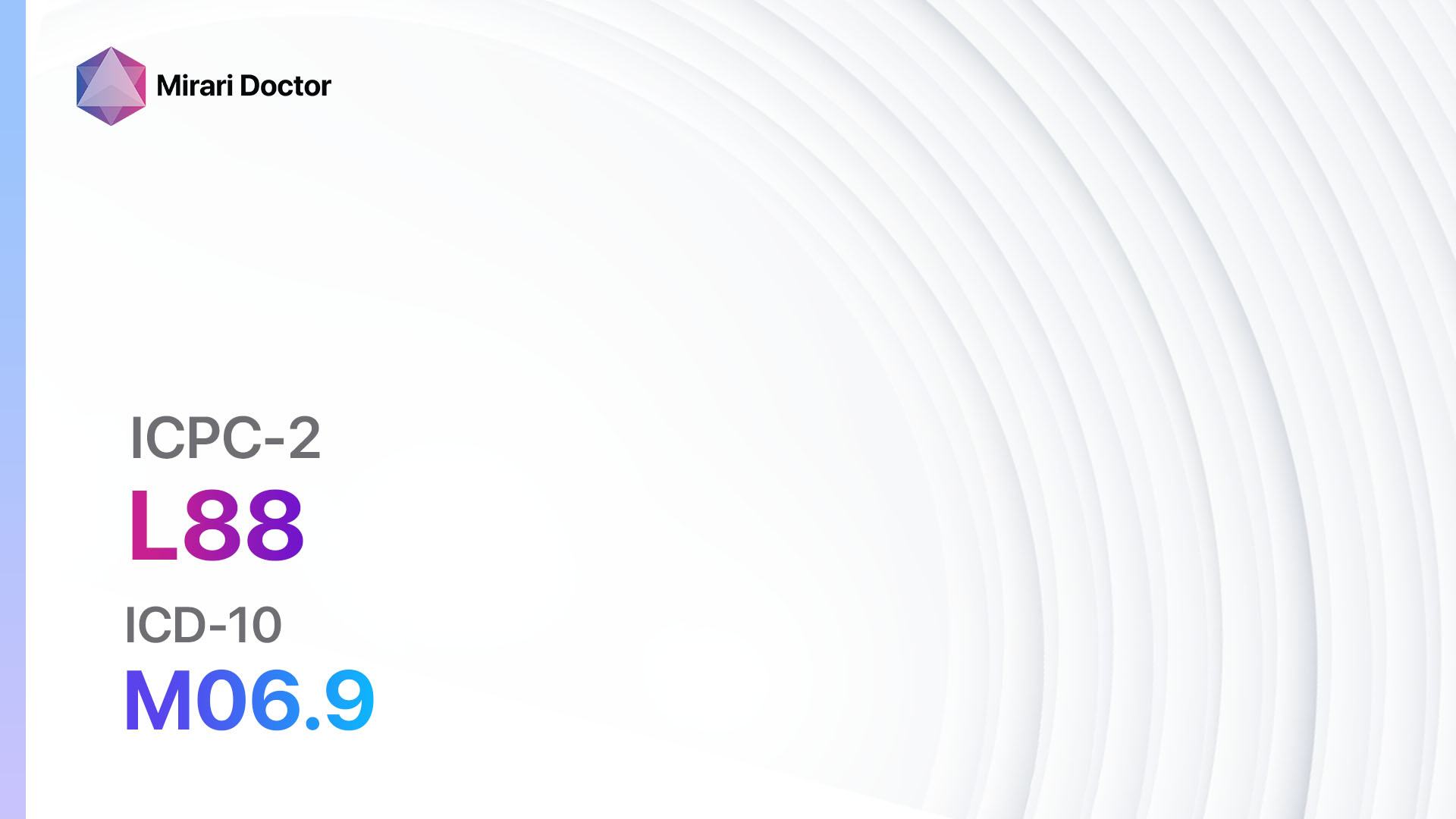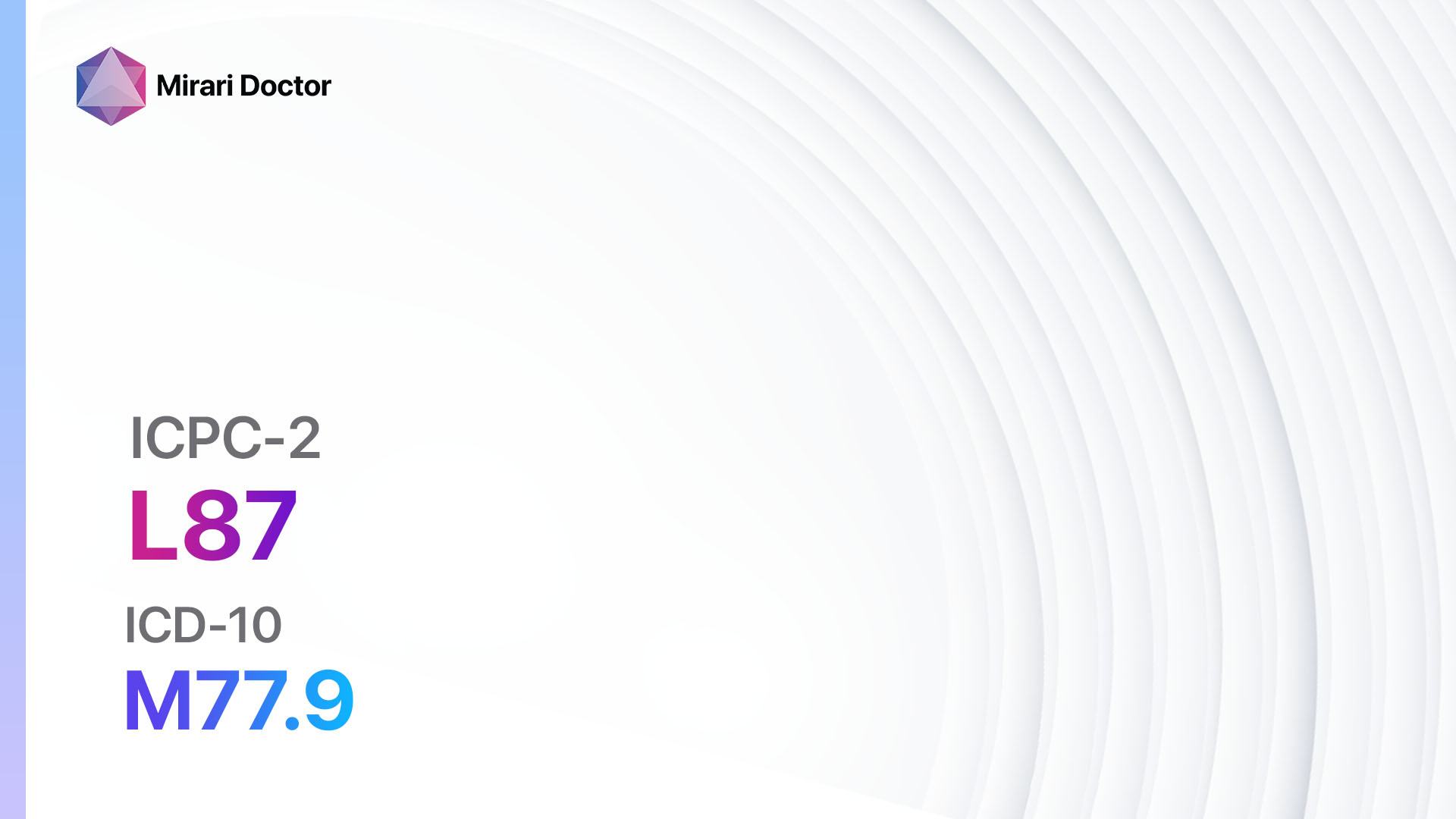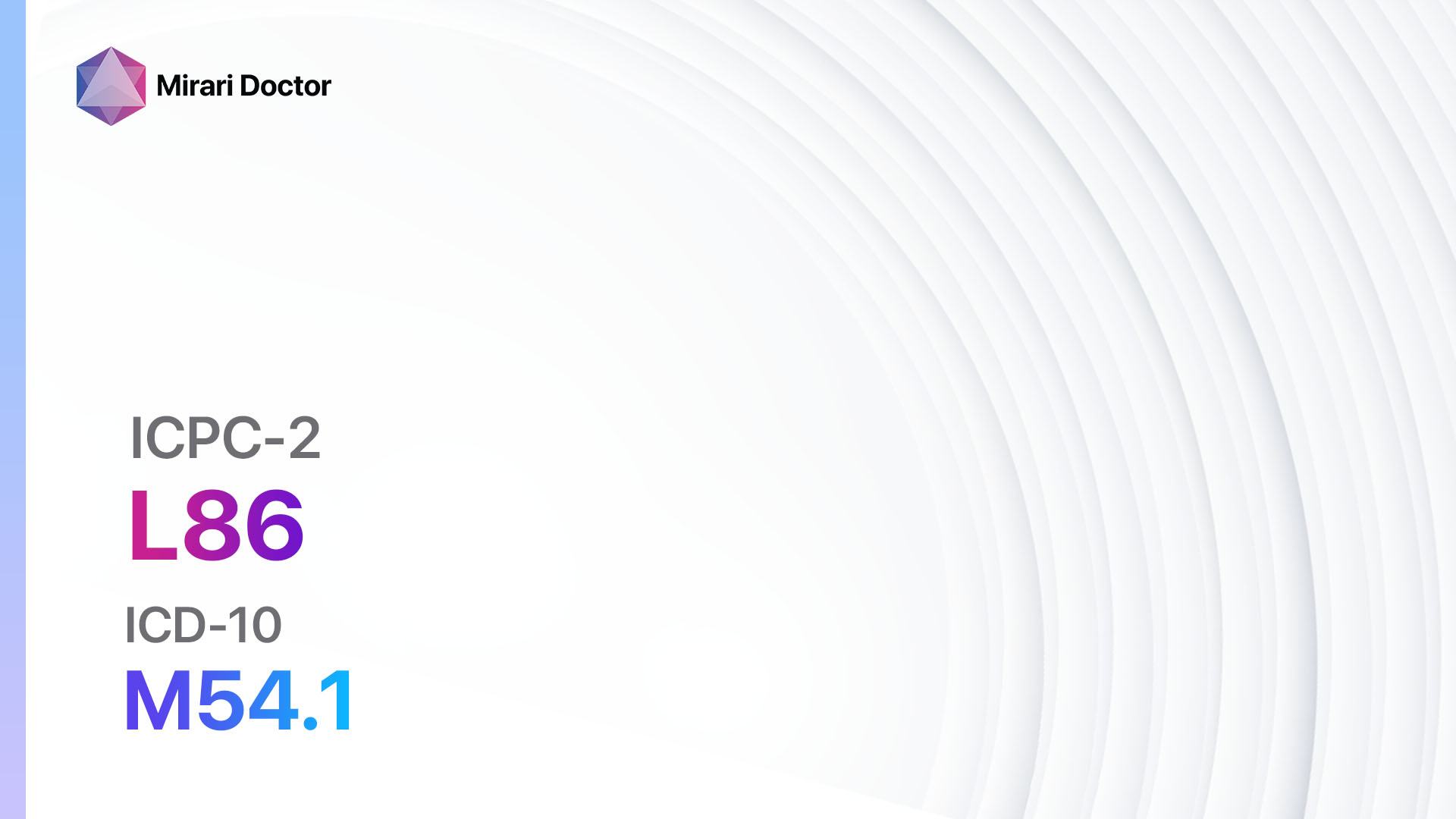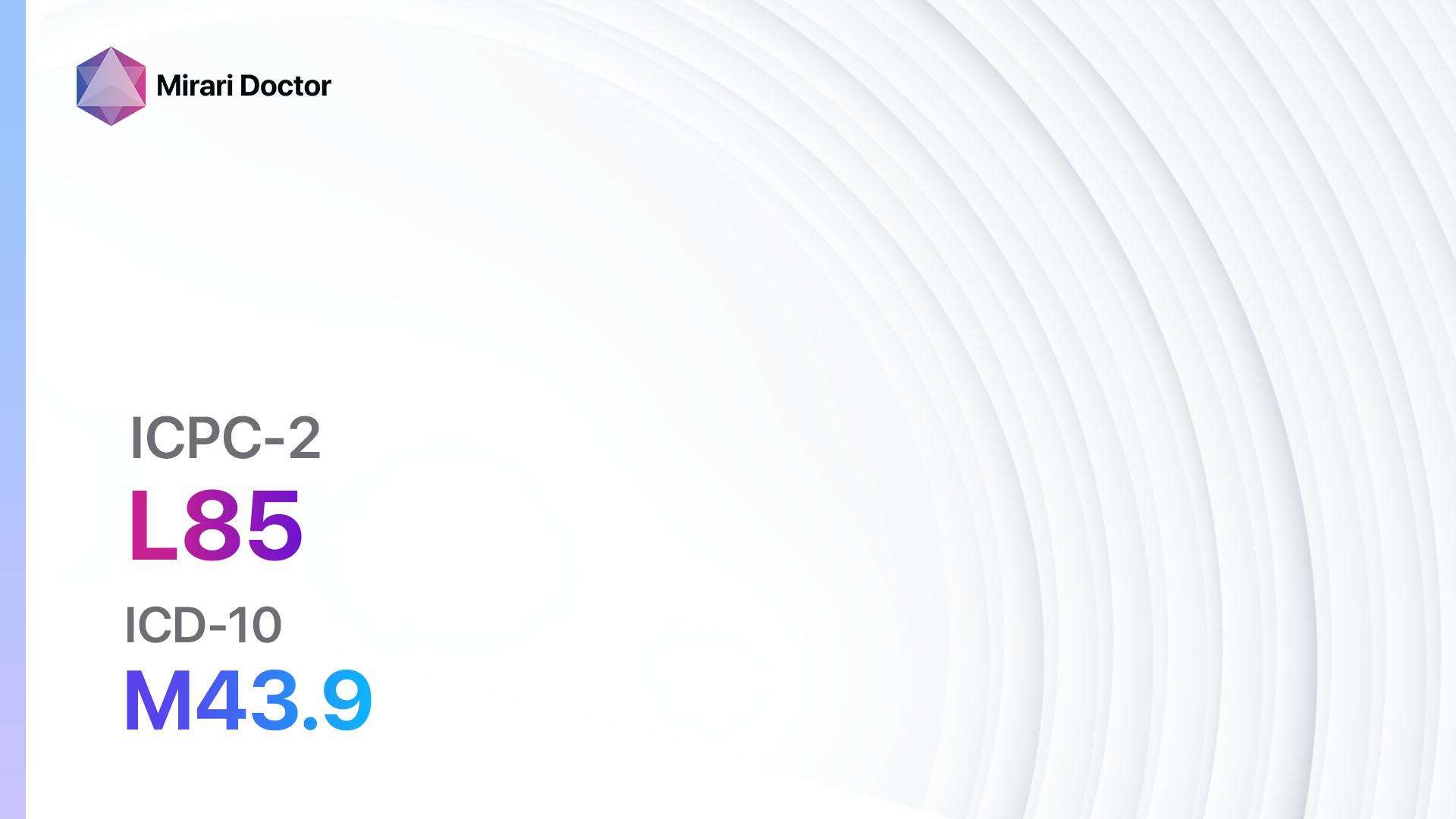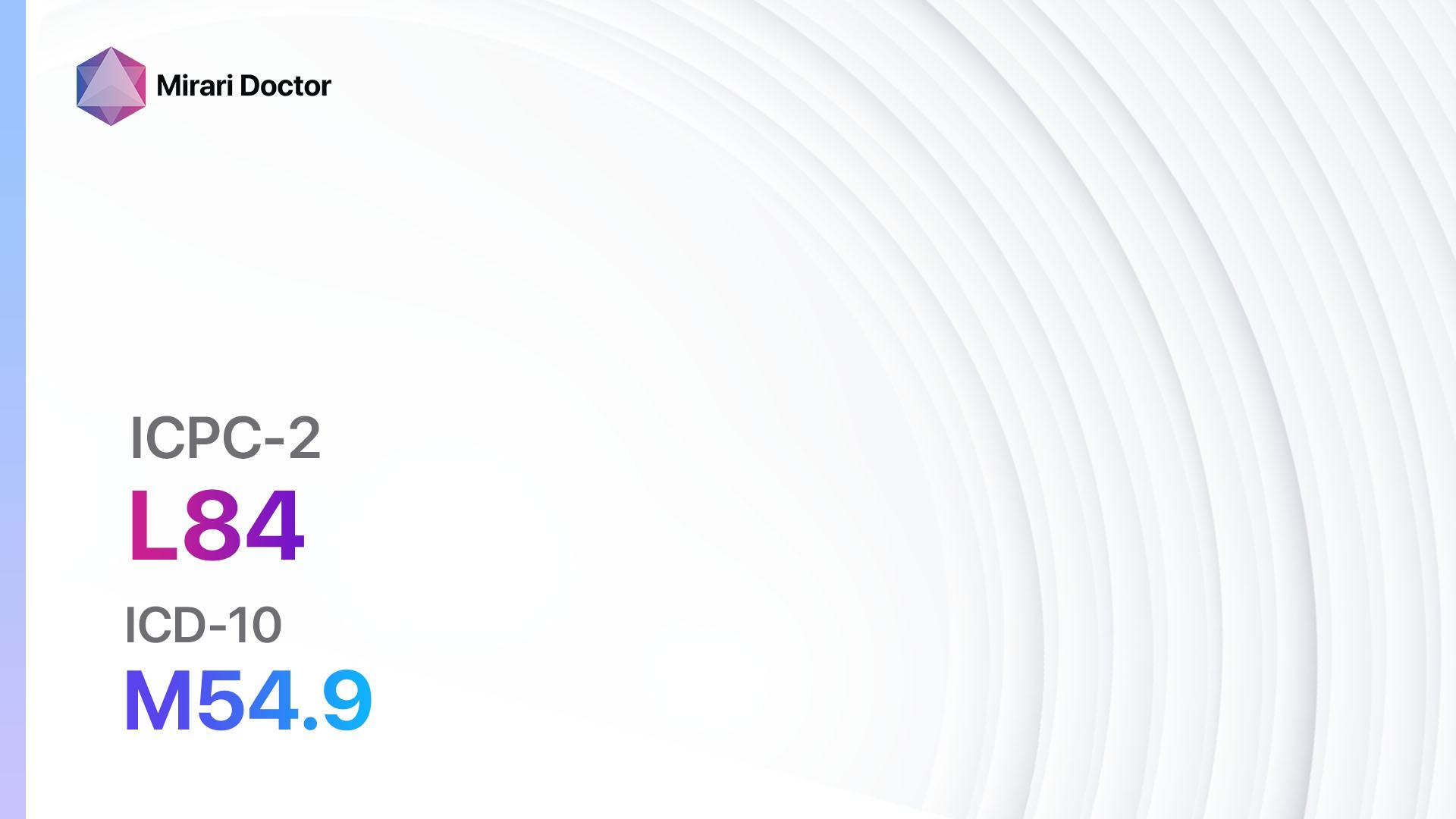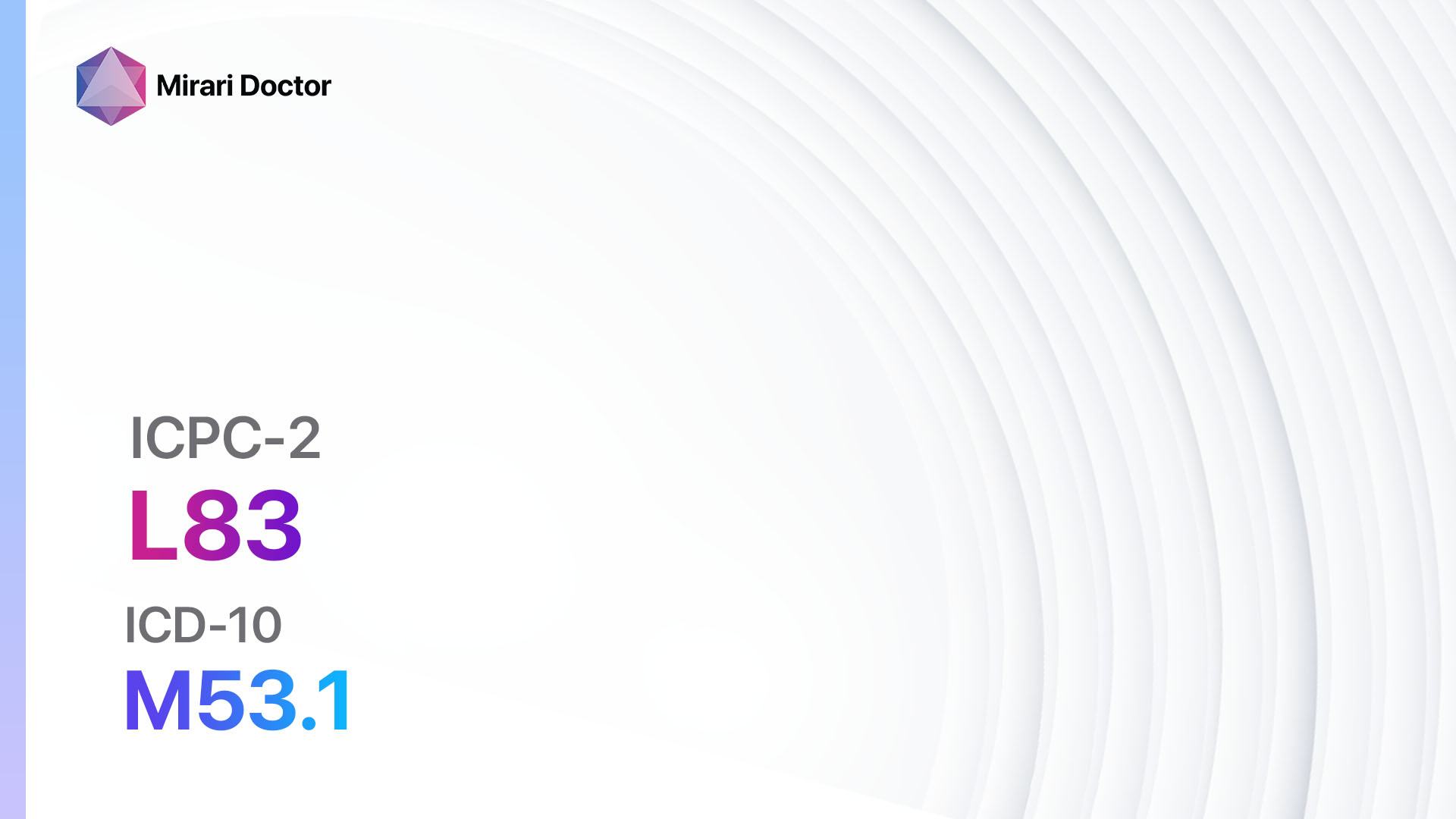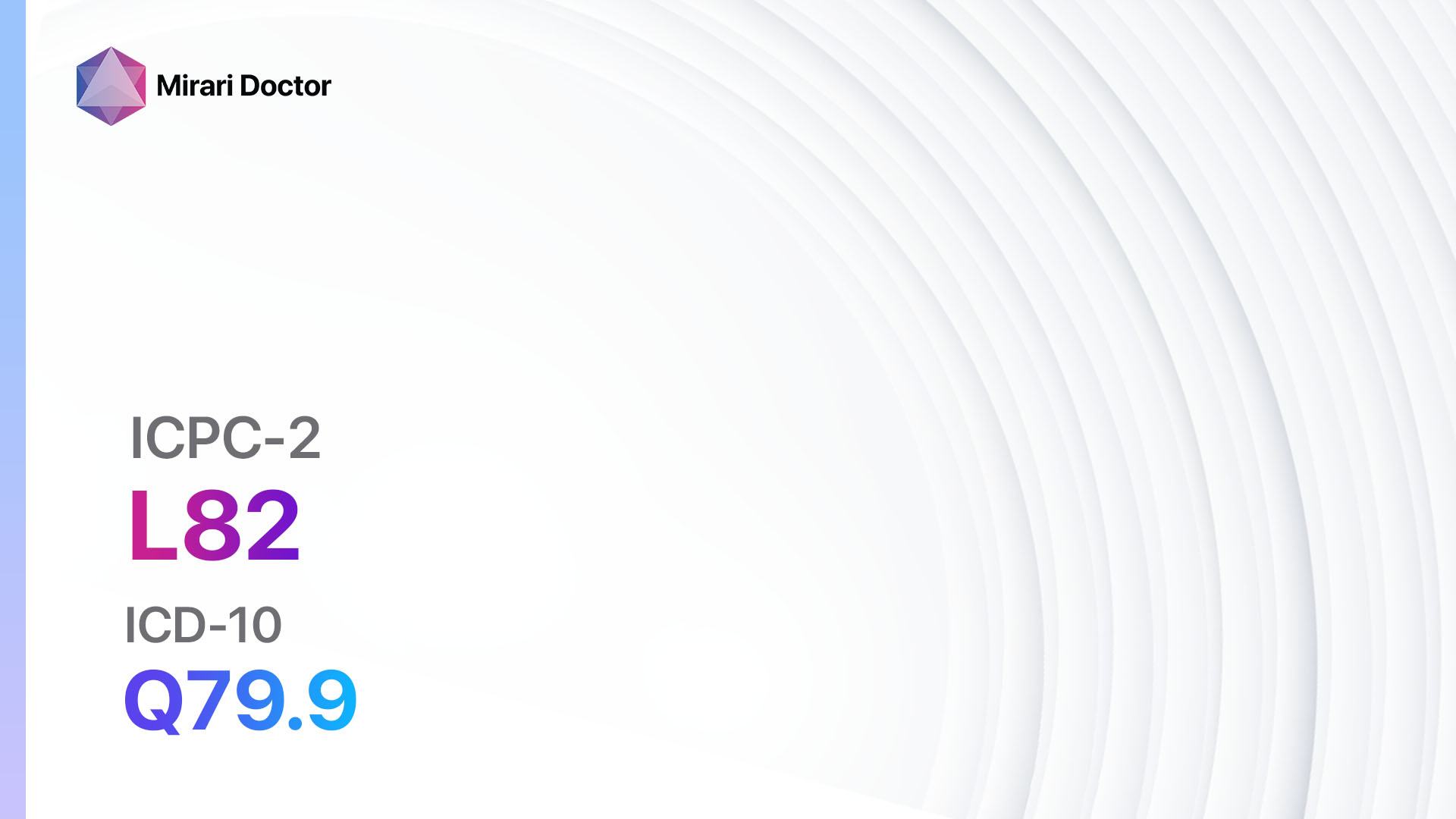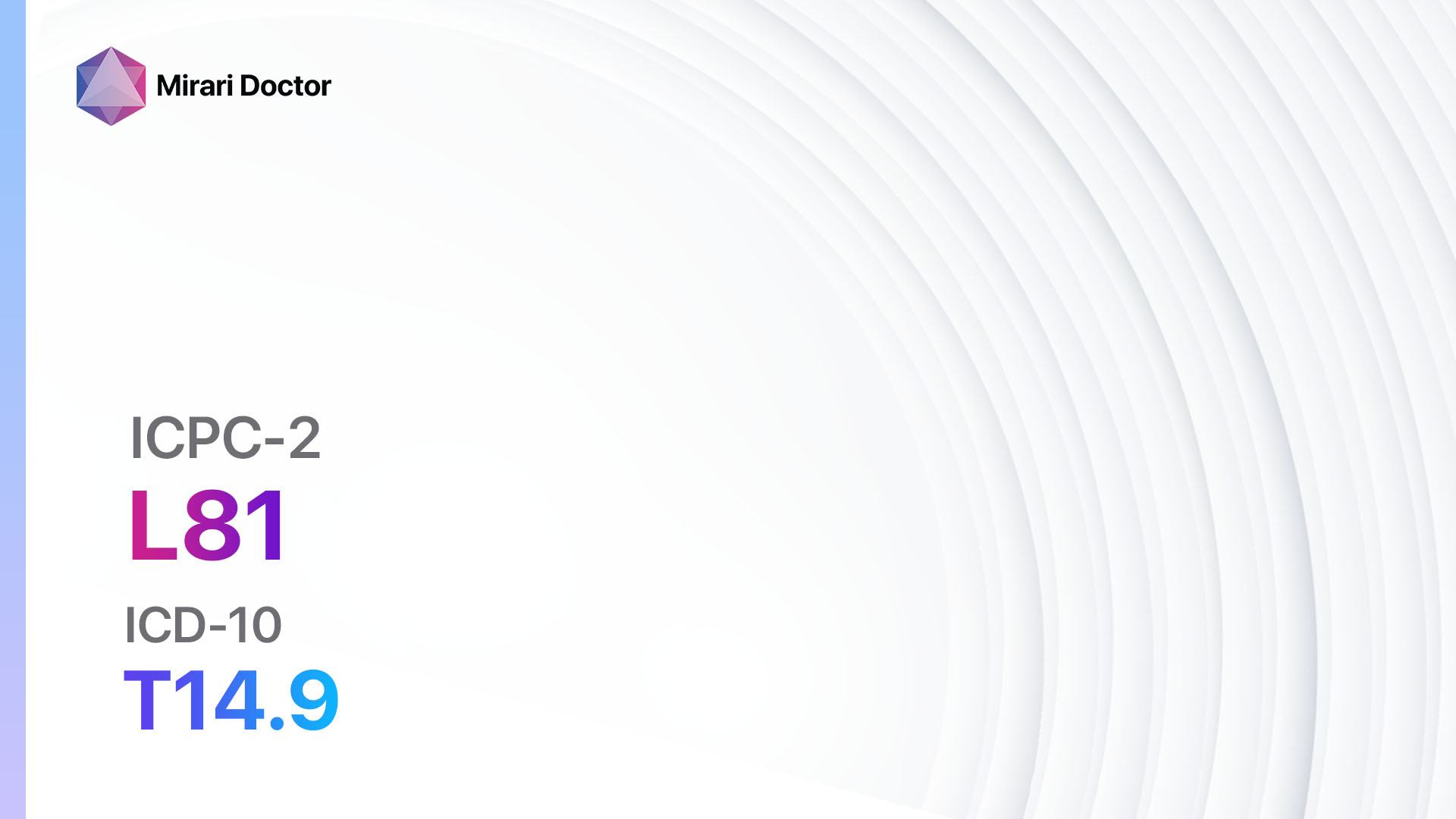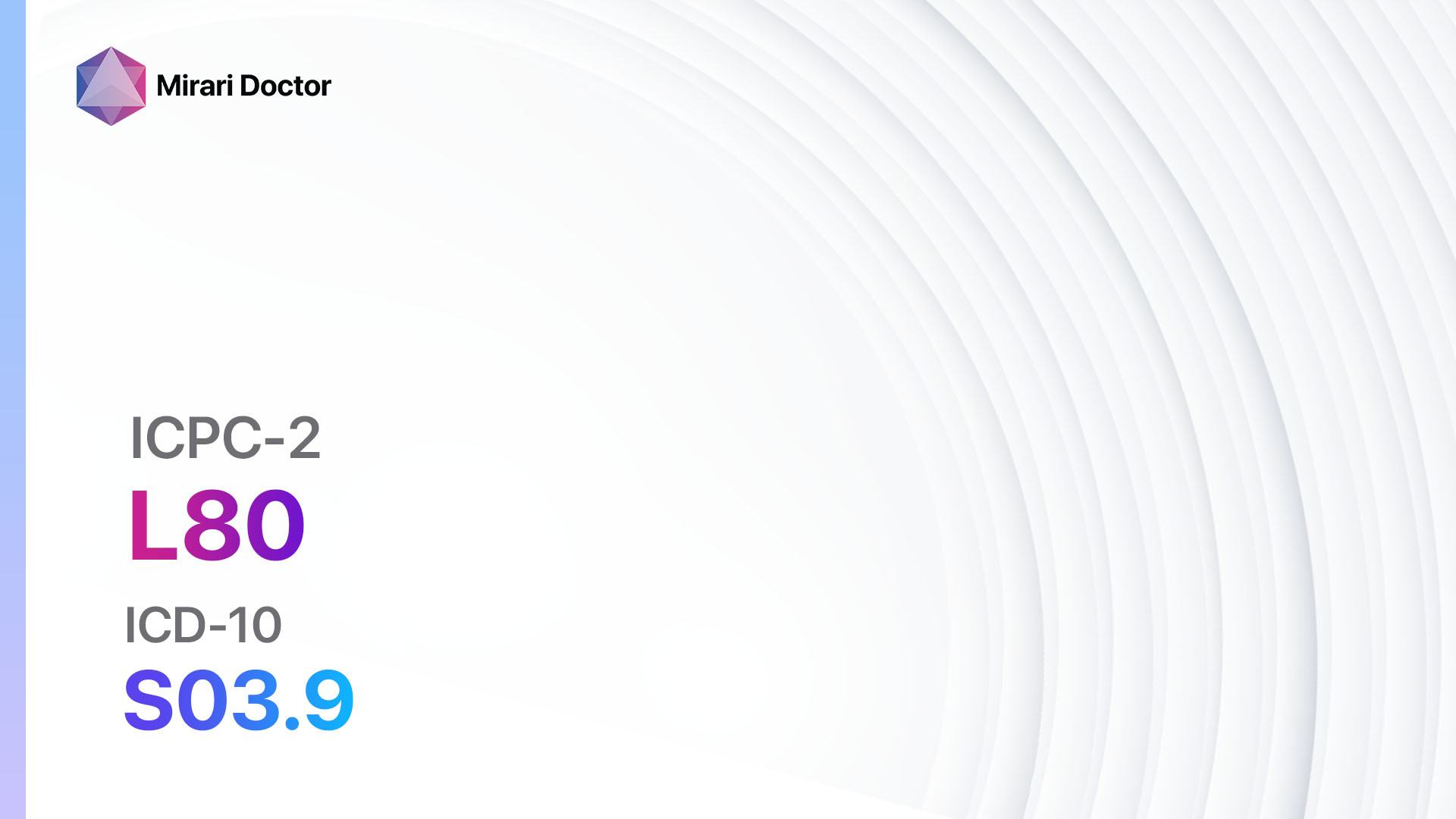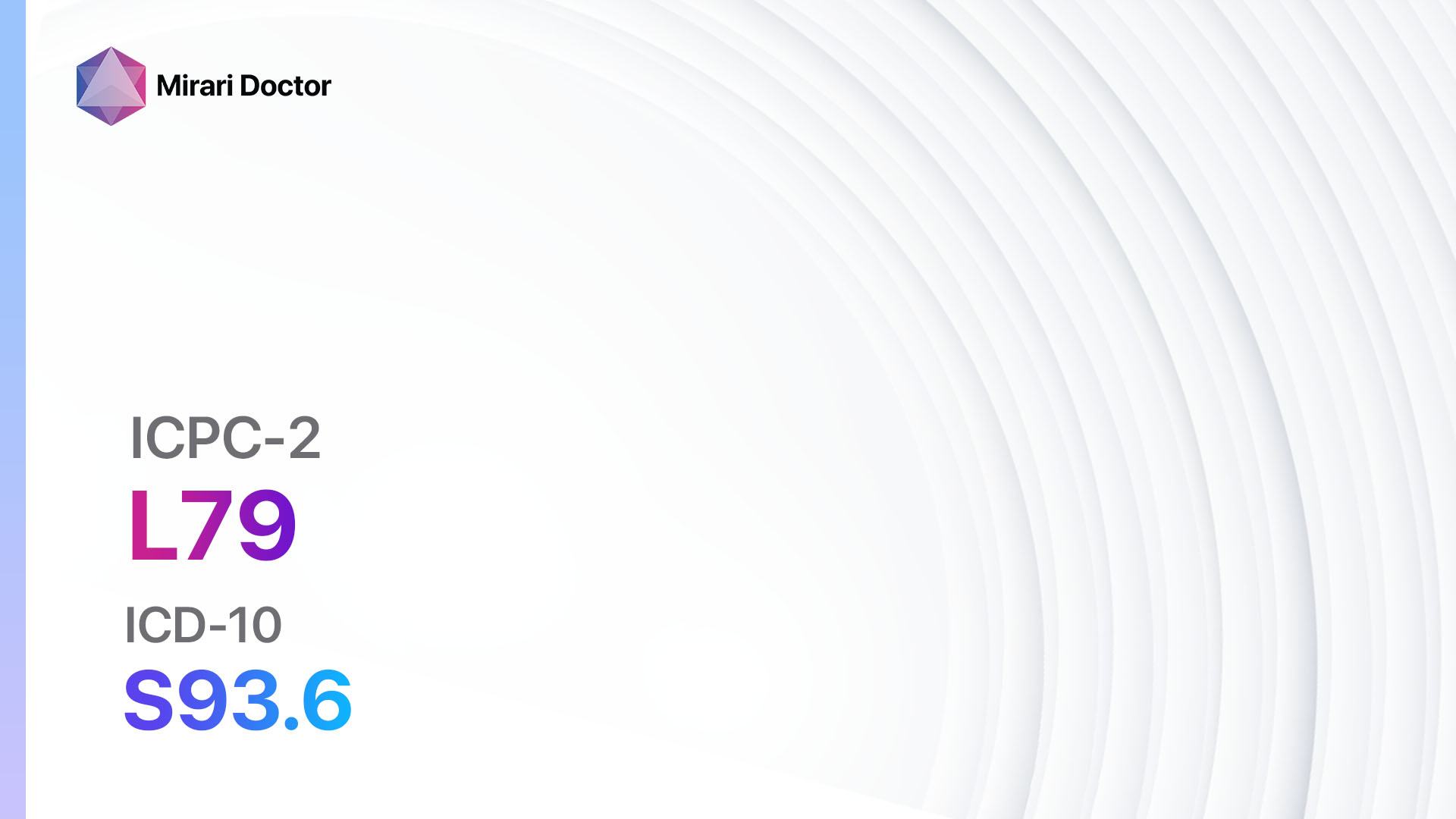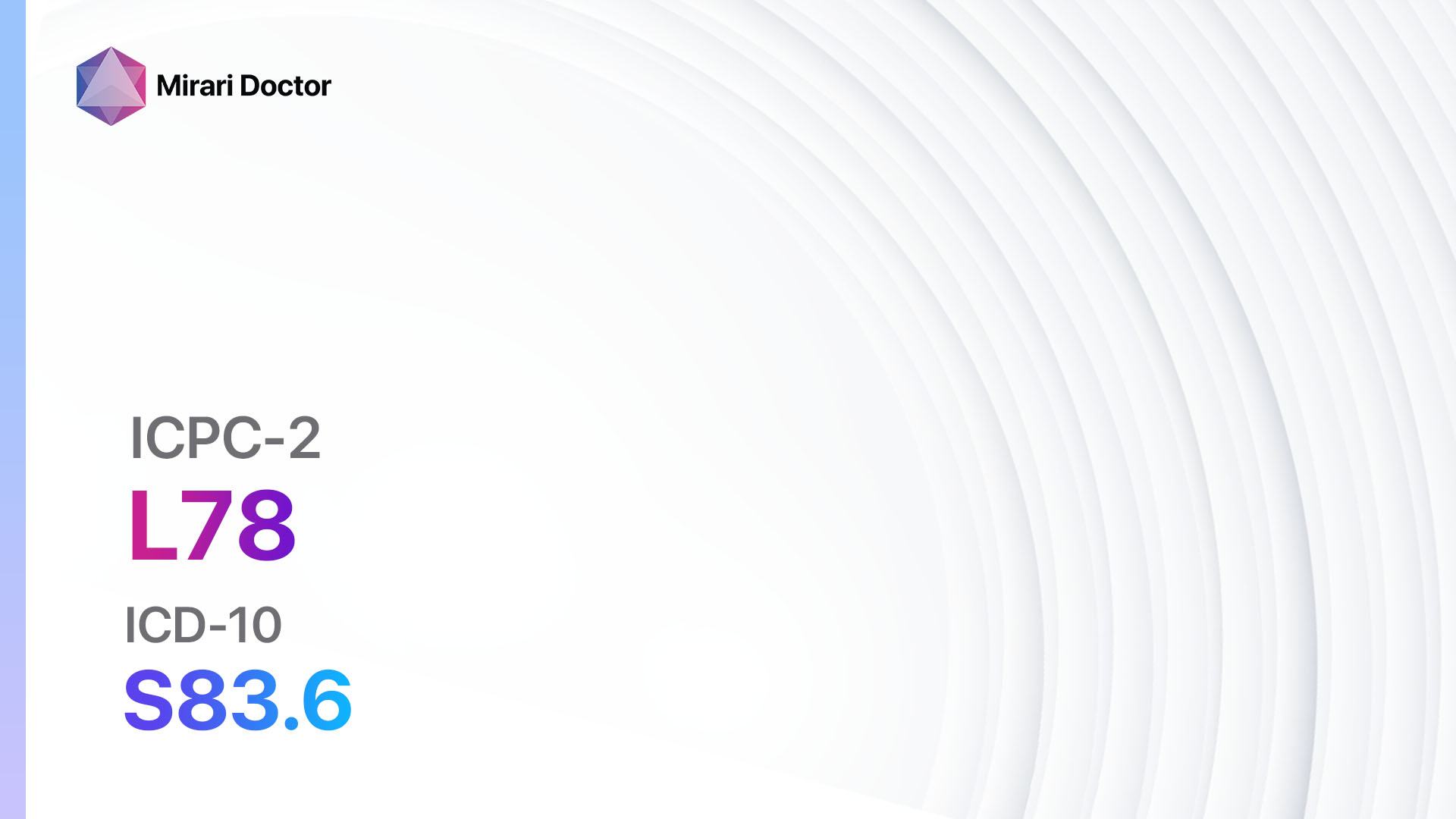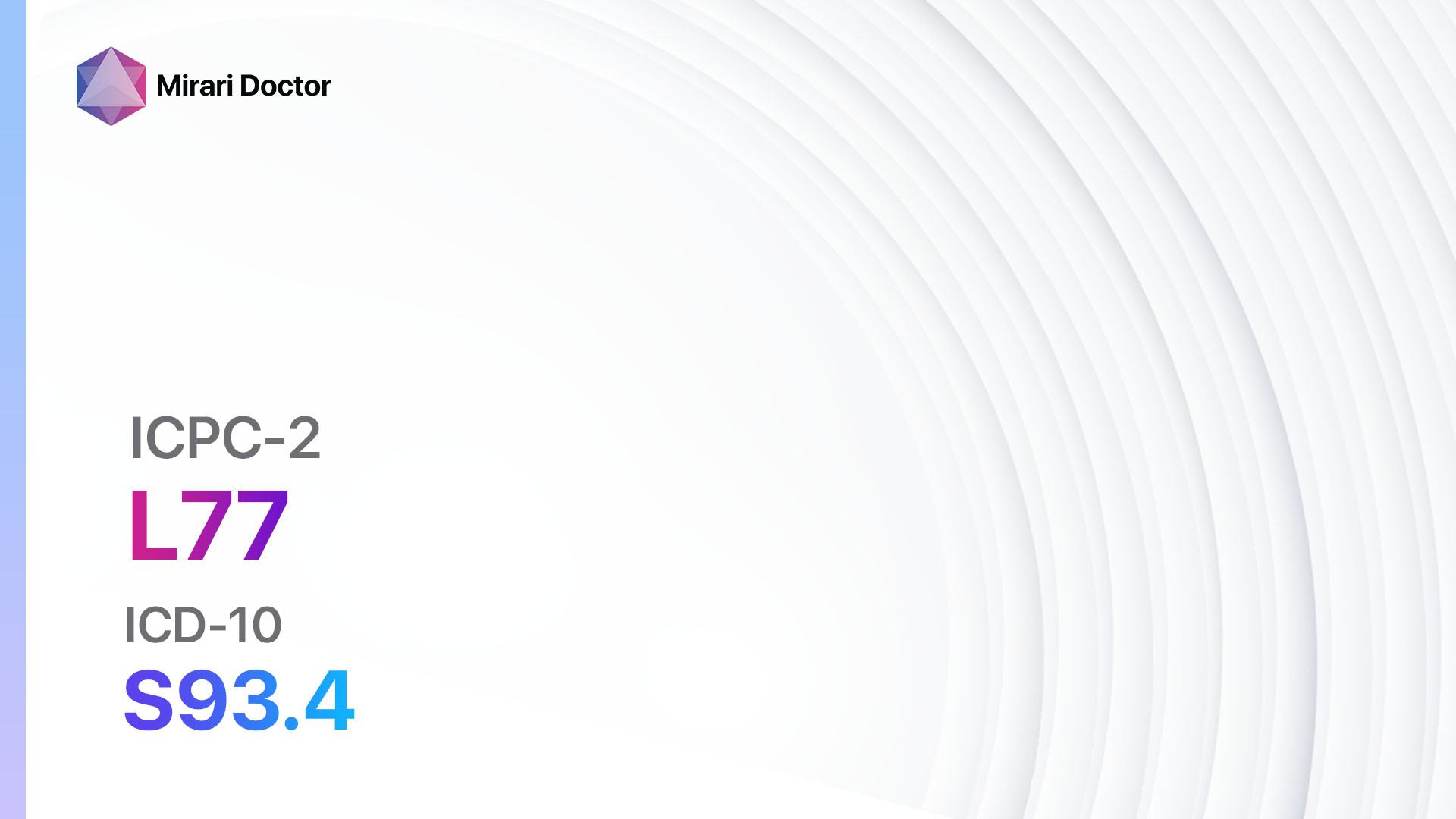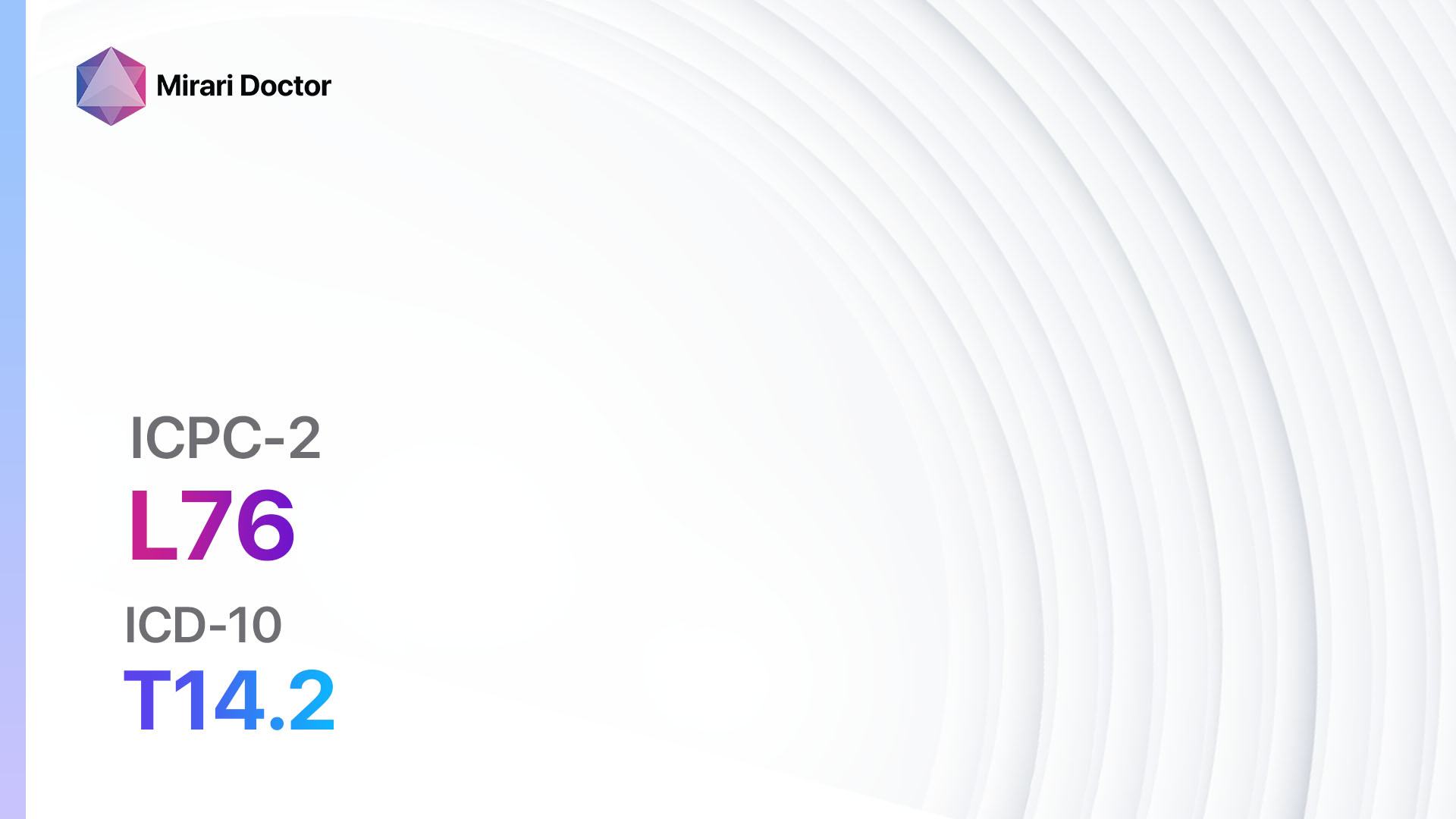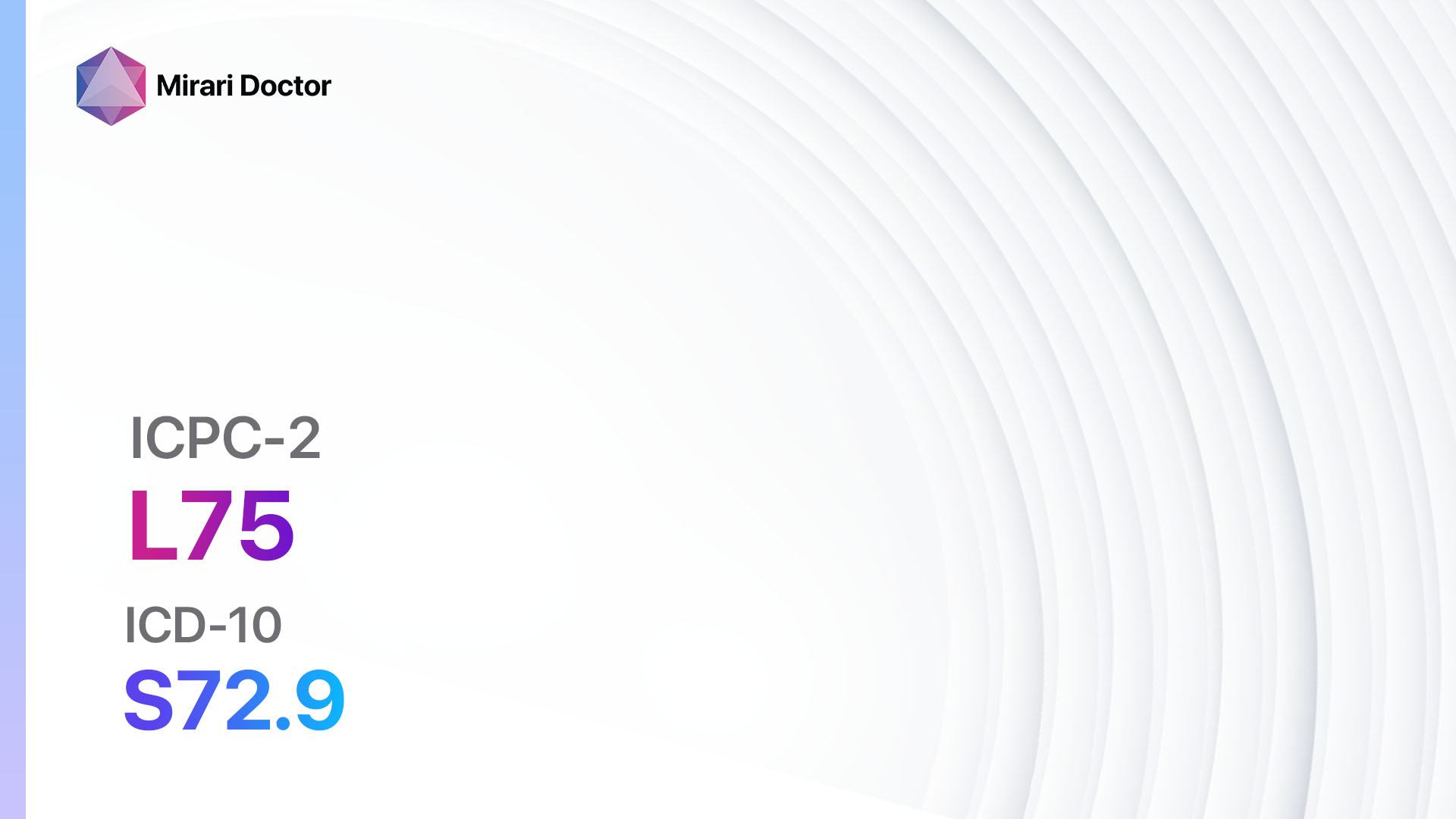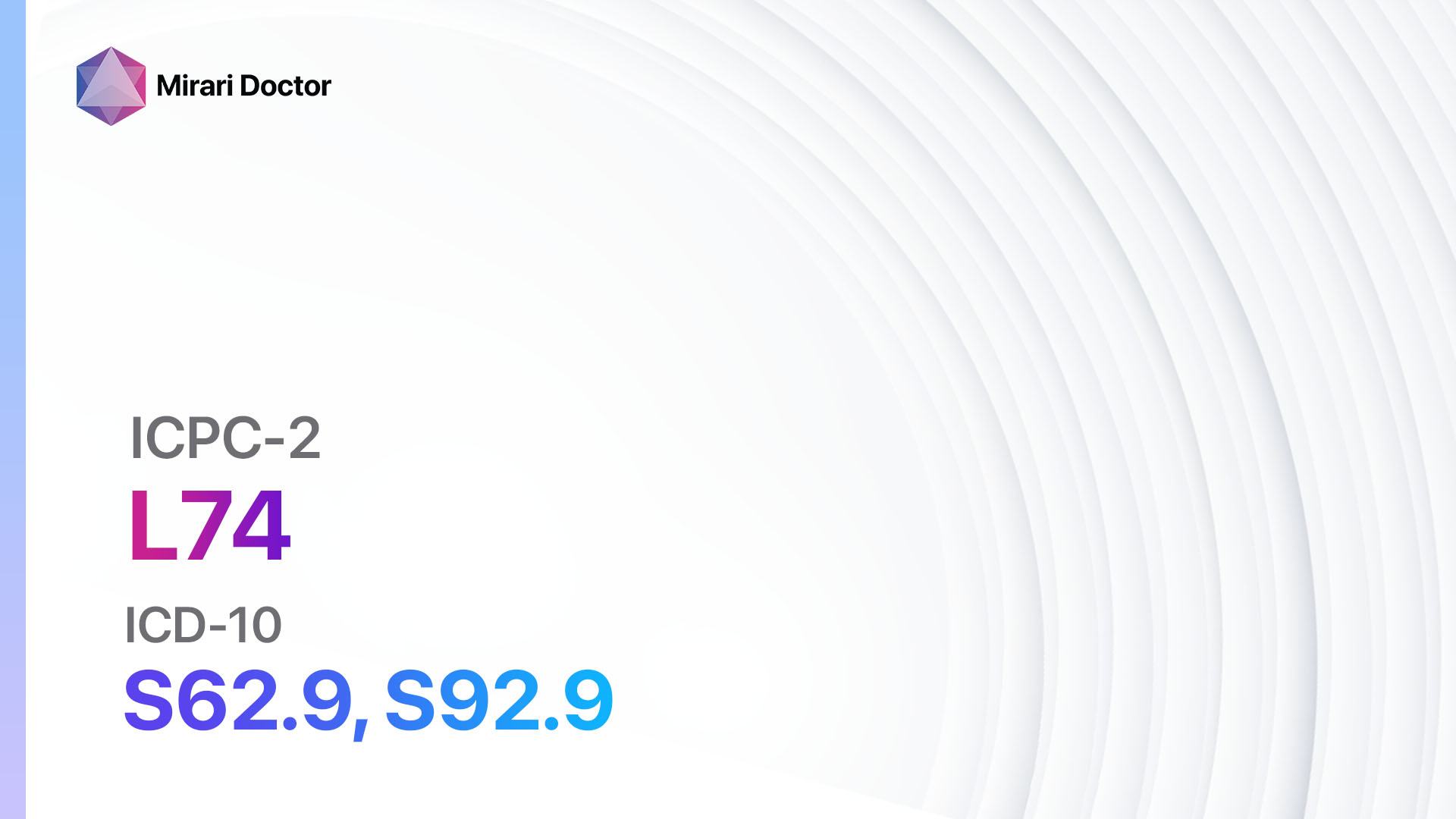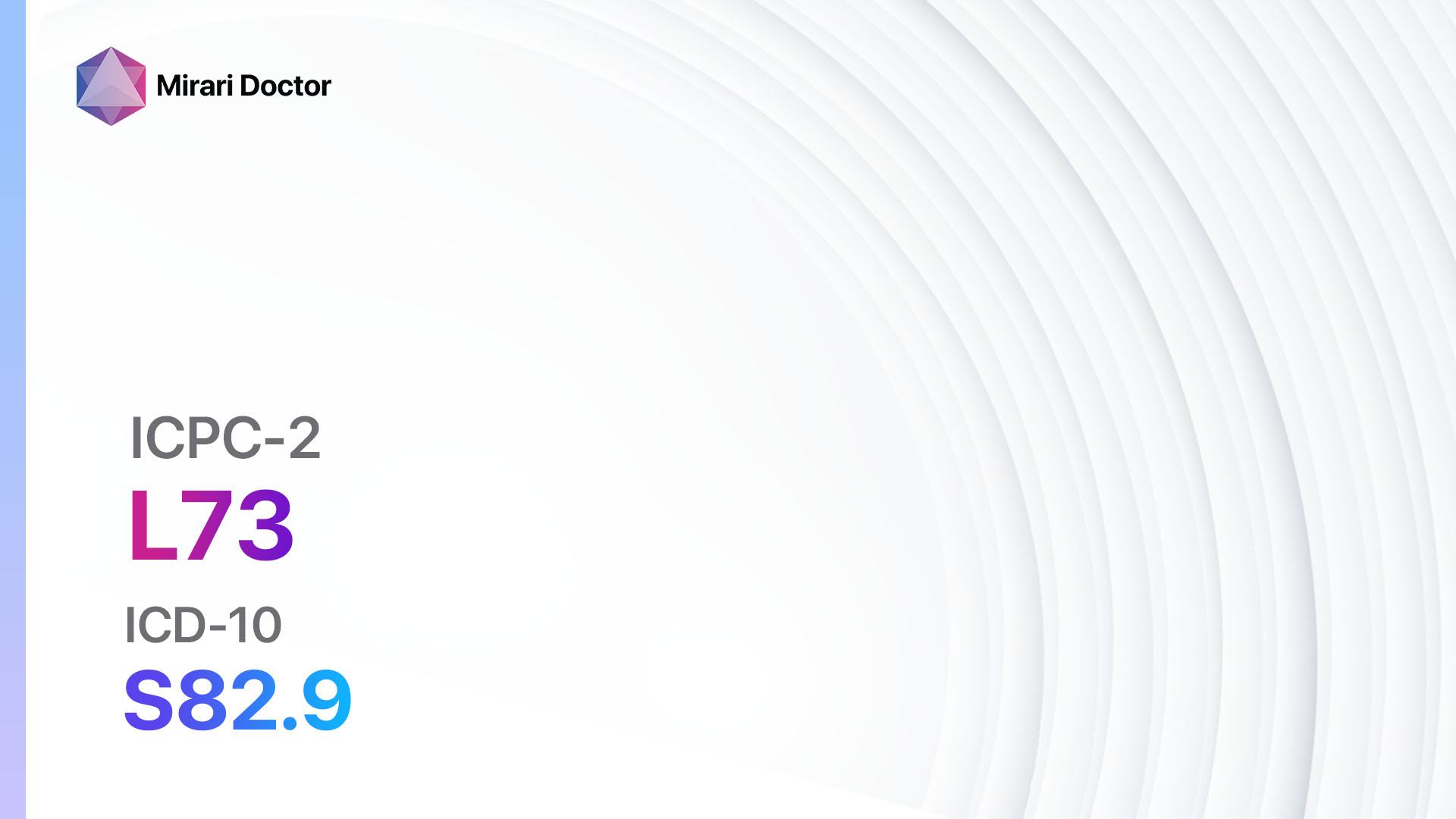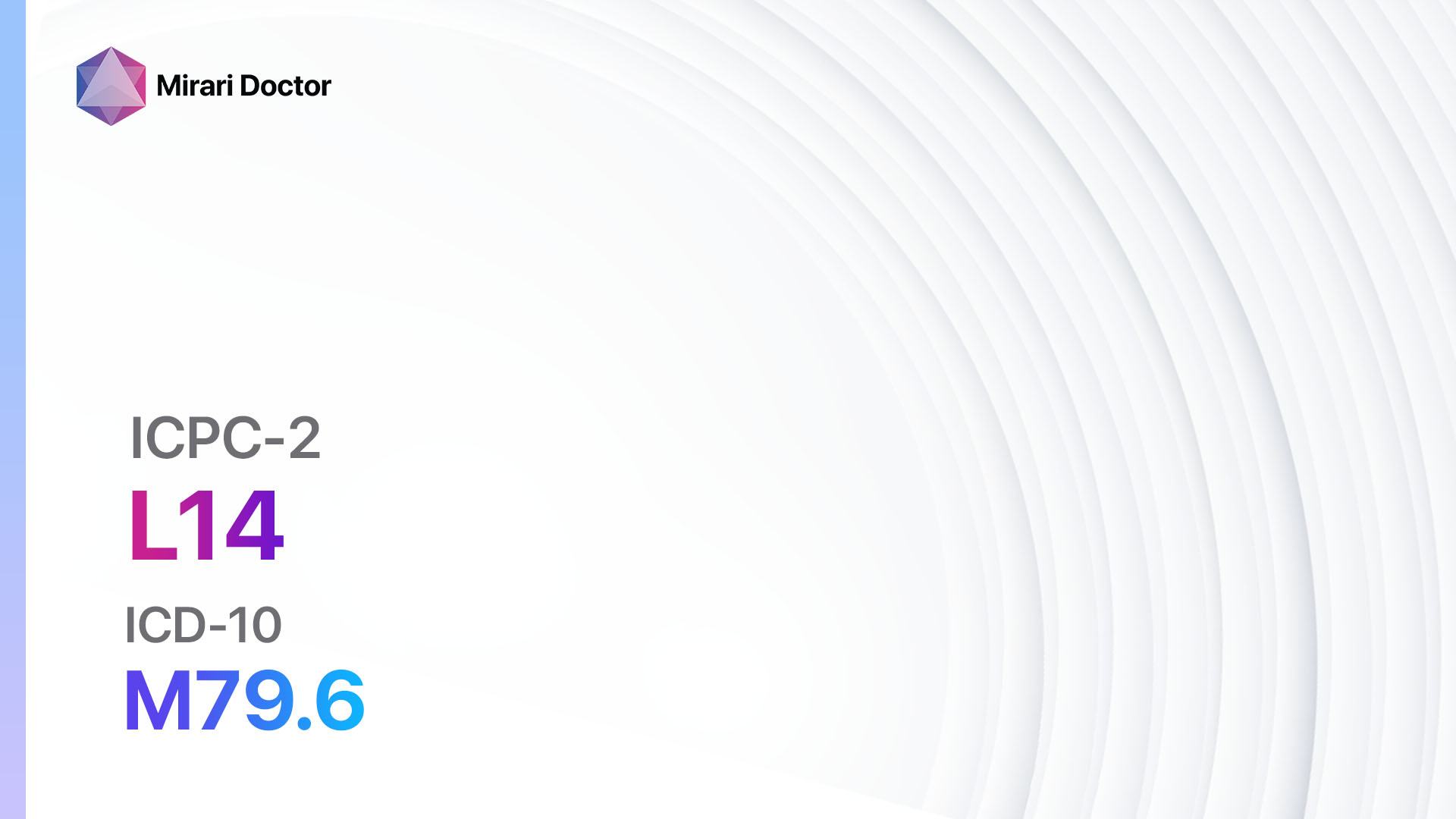
Introduction
Leg/thigh symptoms or complaints refer to any discomfort, pain, or abnormal sensations experienced in the leg or thigh region. These symptoms can be caused by various underlying conditions and can significantly impact an individual’s mobility and quality of life[1]. The aim of this guide is to provide an overview of the symptoms, causes, diagnostic steps, possible interventions, and lifestyle interventions for leg/thigh symptoms or complaints.
Codes
Symptoms
- Pain: Dull, aching, or sharp pain in the leg or thigh region[4].
- Swelling: Swelling or edema in the leg or thigh[5].
- Numbness or tingling: Sensations of numbness or tingling in the leg or thigh[6].
- Weakness: Weakness or difficulty in moving the leg or thigh[7].
- Redness or warmth: Redness or warmth in the leg or thigh[8].
Causes
- Muscle strain or injury: Overuse or sudden movements can lead to muscle strains or injuries in the leg or thigh[9].
- Nerve compression: Compression of nerves in the leg or thigh can cause symptoms such as pain, numbness, or tingling[10].
- Vascular conditions: Conditions affecting blood vessels, such as deep vein thrombosis or peripheral artery disease, can cause leg/thigh symptoms.
- Infection: Infections, such as cellulitis or abscesses, can lead to localized symptoms in the leg or thigh.
- Bone or joint conditions: Conditions affecting the bones or joints, such as fractures or arthritis, can cause leg/thigh symptoms.
Diagnostic Steps
Medical History
- Gather information about the onset, duration, and characteristics of the leg/thigh symptoms.
- Assess for any associated risk factors, such as recent trauma, prolonged immobility, or family history of vascular diseases.
- Inquire about any medical conditions or medications that may contribute to the symptoms.
- Evaluate for any other symptoms or complaints that may be related to the leg/thigh symptoms.
Physical Examination
- Perform a thorough physical examination of the leg and thigh region.
- Assess for any visible signs of swelling, redness, or warmth.
- Palpate the leg and thigh muscles for tenderness or abnormalities.
- Evaluate the range of motion and strength of the leg and thigh.
- Check for any sensory abnormalities, such as numbness or tingling.
Laboratory Tests
- Complete blood count (CBC): To assess for any signs of infection or inflammation.
- Blood chemistry panel: To evaluate kidney and liver function, as well as electrolyte levels.
- Coagulation studies: To rule out any clotting disorders or abnormalities.
- Erythrocyte sedimentation rate (ESR) or C-reactive protein (CRP): To assess for signs of inflammation.
- Blood cultures: If there is suspicion of an underlying infection.
Diagnostic Imaging
- X-ray: To evaluate the bones and joints for fractures, arthritis, or other abnormalities.
- Ultrasound: To assess for any vascular abnormalities, such as blood clots or arterial blockages.
- Magnetic resonance imaging (MRI): To obtain detailed images of the soft tissues, such as muscles, tendons, or nerves.
- Computed tomography (CT) scan: To provide cross-sectional images of the leg and thigh, useful for evaluating bone or joint conditions.
- Doppler ultrasound: To assess blood flow and detect any abnormalities in the blood vessels.
Other Tests
- Electromyography (EMG) and nerve conduction studies: To evaluate nerve function and detect any abnormalities.
- Biopsy: If there is suspicion of an underlying tumor or infection, a biopsy may be necessary to obtain a tissue sample for further analysis.
- Arthroscopy: If there is suspicion of a joint-related condition, such as arthritis, arthroscopy may be performed to visualize and diagnose the problem.
Follow-up and Patient Education
- Schedule follow-up appointments to monitor the progress of the leg/thigh symptoms and adjust treatment if necessary.
- Provide patient education on the underlying condition, treatment options, and lifestyle modifications to manage the symptoms.
- Encourage the patient to report any worsening of symptoms or new symptoms that may arise.
Possible Interventions
Traditional Interventions
Medications:
Top 5 drugs for leg/thigh symptoms/complaints:
- Nonsteroidal anti-inflammatory drugs (NSAIDs) (e.g., Ibuprofen, Naproxen):
- Cost: Generic versions can be $3-$20/month.
- Contraindications: History of gastrointestinal bleeding, renal impairment.
- Side effects: Upset stomach, heartburn, increased risk of bleeding.
- Severe side effects: Severe allergic reactions, liver or kidney damage.
- Drug interactions: Anticoagulants, corticosteroids.
- Warning: Prolonged use may increase the risk of cardiovascular events.
- Muscle relaxants (e.g., Cyclobenzaprine, Methocarbamol):
- Cost: Generic versions can be $10-$30/month.
- Contraindications: Glaucoma, urinary retention.
- Side effects: Drowsiness, dizziness, dry mouth.
- Severe side effects: Severe allergic reactions, liver toxicity.
- Drug interactions: Sedatives, alcohol.
- Warning: May cause drowsiness, avoid driving or operating heavy machinery.
- Antidepressants (e.g., Amitriptyline, Duloxetine):
- Cost: Generic versions can be $10-$50/month.
- Contraindications: Recent myocardial infarction, narrow-angle glaucoma.
- Side effects: Dry mouth, drowsiness, constipation.
- Severe side effects: Suicidal thoughts, serotonin syndrome.
- Drug interactions: Monoamine oxidase inhibitors (MAOIs), other serotonergic drugs.
- Warning: May take several weeks to achieve full effect.
- Anticonvulsants (e.g., Gabapentin, Pregabalin):
- Cost: Generic versions can be $10-$50/month.
- Contraindications: Hypersensitivity to the drug.
- Side effects: Dizziness, drowsiness, weight gain.
- Severe side effects: Suicidal thoughts, severe allergic reactions.
- Drug interactions: Opioids, alcohol.
- Warning: May cause drowsiness, avoid driving or operating heavy machinery.
- Opioids (e.g., Oxycodone, Hydrocodone):
- Cost: Generic versions can be $20-$100/month.
- Contraindications: Respiratory depression, acute asthma.
- Side effects: Constipation, drowsiness, nausea.
- Severe side effects: Respiratory depression, addiction.
- Drug interactions: Benzodiazepines, alcohol.
- Warning: High risk of dependence and addiction, use with caution.
Alternative Drugs:
- Topical analgesics (e.g., Lidocaine patches): Provide localized pain relief. Cost: $10-$50 per box.
- Antispasmodics (e.g., Baclofen): Useful for muscle spasms. Cost: $10-$30/month.
- Corticosteroids (e.g., Prednisone): May be used for severe inflammation. Cost: $10-$50/month.
- Antiviral medications (e.g., Acyclovir): If leg/thigh symptoms are caused by a viral infection. Cost: $10-$50/month.
- Antibiotics (e.g., Amoxicillin, Cephalexin): If leg/thigh symptoms are caused by a bacterial infection. Cost: $10-$50/month.
Surgical Procedures:
- Arthroscopy: Minimally invasive procedure to diagnose and treat joint-related conditions. Cost: $5,000 to $10,000.
- Fracture fixation: Surgical repair of fractures in the leg or thigh. Cost: $10,000 to $30,000.
- Vascular surgery: If leg/thigh symptoms are caused by vascular conditions, such as peripheral artery disease or deep vein thrombosis. Cost: $15,000 to $50,000.
Alternative Interventions
- Acupuncture: May help reduce pain and improve blood flow. Cost: $60-$120 per session.
- Chiropractic care: Manipulative therapy to alleviate musculoskeletal pain. Cost: $50-$200 per session.
- Physical therapy: Exercises and techniques to improve strength and mobility. Cost: $50-$150 per session.
- Massage therapy: Manual manipulation of soft tissues to reduce pain and promote relaxation. Cost: $50-$100 per session.
- Herbal supplements: Some herbs, such as turmeric or ginger, may have anti-inflammatory properties. Cost: Varies depending on the specific supplement.
Lifestyle Interventions
- Exercise: Regular physical activity, such as walking or swimming, can improve circulation and strengthen muscles. Cost: Varies (e.g., gym membership, equipment).
- Weight management: Maintaining a healthy weight can reduce stress on the leg and thigh muscles and joints. Cost: Varies (e.g., healthy food choices, weight loss programs).
- Heat or cold therapy: Applying heat or cold packs to the affected area can help alleviate pain and reduce inflammation. Cost: Varies (e.g., heating pad, ice pack).
- Compression stockings: Wearing compression stockings can improve blood flow and reduce swelling. Cost: $10-$50 per pair.
- Elevation: Elevating the leg or thigh can help reduce swelling and improve circulation. Cost: Free.
It is important to note that the cost ranges provided are approximate and may vary depending on the location and availability of the interventions.
Mirari Cold Plasma Alternative Intervention
Understanding Mirari Cold Plasma
- Safe and Non-Invasive Treatment: Mirari Cold Plasma is a safe and non-invasive treatment option for various skin conditions. It does not require incisions, minimizing the risk of scarring, bleeding, or tissue damage.
- Efficient Extraction of Foreign Bodies: Mirari Cold Plasma facilitates the removal of foreign bodies from the skin by degrading and dissociating organic matter, allowing easier access and extraction.
- Pain Reduction and Comfort: Mirari Cold Plasma has a local analgesic effect, providing pain relief during the treatment, making it more comfortable for the patient.
- Reduced Risk of Infection: Mirari Cold Plasma has antimicrobial properties, effectively killing bacteria and reducing the risk of infection.
- Accelerated Healing and Minimal Scarring: Mirari Cold Plasma stimulates wound healing and tissue regeneration, reducing healing time and minimizing the formation of scars.
Mirari Cold Plasma Prescription
Video instructions for using Mirari Cold Plasma Device – L14 Leg/thigh symptom/complaint (ICD-10:M79.6)
| Mild | Moderate | Severe |
| Mode setting: 2 (Wound Healing) Location: 0 (Localized) Morning: 15 minutes, Evening: 15 minutes |
Mode setting: 2 (Wound Healing) Location: 0 (Localized) Morning: 30 minutes, Lunch: 30 minutes, Evening: 30 minutes |
Mode setting: 2 (Wound Healing) Location: 0 (Localized) Morning: 30 minutes, Lunch: 30 minutes, Evening: 30 minutes |
| Mode setting: 9 (Arthritis) Location: 0 (Localized) Morning: 15 minutes, Evening: 15 minutes |
Mode setting: 9 (Arthritis) Location: 0 (Localized) Morning: 30 minutes, Lunch: 30 minutes, Evening: 30 minutes |
Mode setting: 9 (Arthritis) Location: 0 (Localized) Morning: 30 minutes, Lunch: 30 minutes, Evening: 30 minutes |
| Mode setting: 7 (Immunotherapy) Location: 1 (Sacrum) Morning: 15 minutes, Evening: 15 minutes |
Mode setting: 7 (Immunotherapy) Location: 1 (Sacrum) Morning: 30 minutes, Lunch: 30 minutes, Evening: 30 minutes |
Mode setting: 7 (Immunotherapy) Location: 1 (Sacrum) Morning: 30 minutes, Lunch: 30 minutes, Evening: 30 minutes |
| Total Morning: 45 minutes approx. $7.50 USD, Evening: 45 minutes approx. $7.50 USD |
Total Morning: 90 minutes approx. $15 USD, Lunch: 90 minutes approx. $15 USD, Evening: 90 minutes approx. $15 USD, |
Total Morning: 90 minutes approx. $15 USD, Lunch: 90 minutes approx. $15 USD, Evening: 90 minutes approx. $15 USD, |
| Usual treatment for 7-60 days approx. $105 USD – $900 USD | Usual treatment for 6-8 weeks approx. $1,890 USD – $2,520 USD |
Usual treatment for 3-6 months approx. $4,050 USD – $8,100 USD
|
 |
|
Use the Mirari Cold Plasma device to treat Leg/thigh symptom/complaint effectively.
WARNING: MIRARI COLD PLASMA IS DESIGNED FOR THE HUMAN BODY WITHOUT ANY ARTIFICIAL OR THIRD PARTY PRODUCTS. USE OF OTHER PRODUCTS IN COMBINATION WITH MIRARI COLD PLASMA MAY CAUSE UNPREDICTABLE EFFECTS, HARM OR INJURY. PLEASE CONSULT A MEDICAL PROFESSIONAL BEFORE COMBINING ANY OTHER PRODUCTS WITH USE OF MIRARI.
Step 1: Cleanse the Skin
- Start by cleaning the affected area of the skin with a gentle cleanser or mild soap and water. Gently pat the area dry with a clean towel.
Step 2: Prepare the Mirari Cold Plasma device
- Ensure that the Mirari Cold Plasma device is fully charged or has fresh batteries as per the manufacturer’s instructions. Make sure the device is clean and in good working condition.
- Switch on the Mirari device using the power button or by following the specific instructions provided with the device.
- Some Mirari devices may have adjustable settings for intensity or treatment duration. Follow the manufacturer’s instructions to select the appropriate settings based on your needs and the recommended guidelines.
Step 3: Apply the Device
- Place the Mirari device in direct contact with the affected area of the skin. Gently glide or hold the device over the skin surface, ensuring even coverage of the area experiencing.
- Slowly move the Mirari device in a circular motion or follow a specific pattern as indicated in the user manual. This helps ensure thorough treatment coverage.
Step 4: Monitor and Assess:
- Keep track of your progress and evaluate the effectiveness of the Mirari device in managing your Leg/thigh symptom/complaint. If you have any concerns or notice any adverse reactions, consult with your health care professional.
Note
This guide is for informational purposes only and should not replace the advice of a medical professional. Always consult with your healthcare provider or a qualified medical professional for personal advice, diagnosis, or treatment. Do not solely rely on the information presented here for decisions about your health. Use of this information is at your own risk. The authors of this guide, nor any associated entities or platforms, are not responsible for any potential adverse effects or outcomes based on the content.
Mirari Cold Plasma System Disclaimer
- Purpose: The Mirari Cold Plasma System is a Class 2 medical device designed for use by trained healthcare professionals. It is registered for use in Thailand and Vietnam. It is not intended for use outside of these locations.
- Informational Use: The content and information provided with the device are for educational and informational purposes only. They are not a substitute for professional medical advice or care.
- Variable Outcomes: While the device is approved for specific uses, individual outcomes can differ. We do not assert or guarantee specific medical outcomes.
- Consultation: Prior to utilizing the device or making decisions based on its content, it is essential to consult with a Certified Mirari Tele-Therapist and your medical healthcare provider regarding specific protocols.
- Liability: By using this device, users are acknowledging and accepting all potential risks. Neither the manufacturer nor the distributor will be held accountable for any adverse reactions, injuries, or damages stemming from its use.
- Geographical Availability: This device has received approval for designated purposes by the Thai and Vietnam FDA. As of now, outside of Thailand and Vietnam, the Mirari Cold Plasma System is not available for purchase or use.
References
- Havelin, J., & King, T. (2019). Mechanisms underlying bone and joint pain. Pain, 160(Suppl 1), S32-S40. https://doi.org/10.1097/j.pain.0000000000001523
- WONCA International Classification Committee. (2005). ICPC-2: International Classification of Primary Care (2nd ed.). Oxford University Press.
- World Health Organization. (2019). International Statistical Classification of Diseases and Related Health Problems (11th ed.). https://icd.who.int/
- Healthline. (2021). Pain in Upper Thigh: 9 causes, symptoms, and treatment. https://www.healthline.com/health/pain-in-upper-thigh
- NHS inform. (2023). Thigh problems. https://www.nhsinform.scot/illnesses-and-conditions/muscle-bone-and-joints/self-management-advice/thigh-problems/
- Medical News Today. (2018). Leg pain: Types, causes, and home treatment. https://www.medicalnewstoday.com/articles/321001
- Spine-health. (2019). Accurately Diagnosing Leg Pain. https://www.spine-health.com/conditions/leg-pain/accurately-diagnosing-leg-pain
- Cleveland Clinic. (2021). Thigh Contusion: Symptoms & Treatment Options. https://my.clevelandclinic.org/health/diseases/17551-thigh-contusion
- WebMD. (2021). 7 Vascular Diseases That Cause Pain & Treatment Options. https://www.webmd.com/pain-management/vascular-diseases-pain
- Rempel, D., Dahlin, L., & Lundborg, G. (1999). Pathophysiology of Nerve Compression Syndromes and Vibration Induced Neuropathy. In W. S. Marras & W. Karwowski (Eds.), The Occupational Ergonomics Handbook (pp. 743-754). CRC Press.
Related articles
Made in USA


